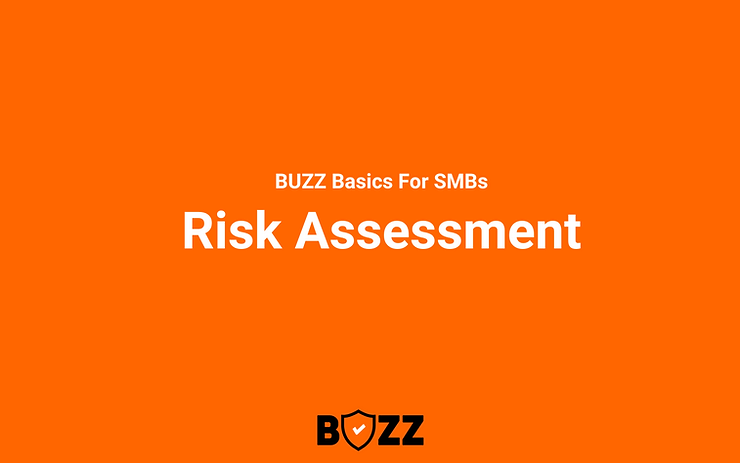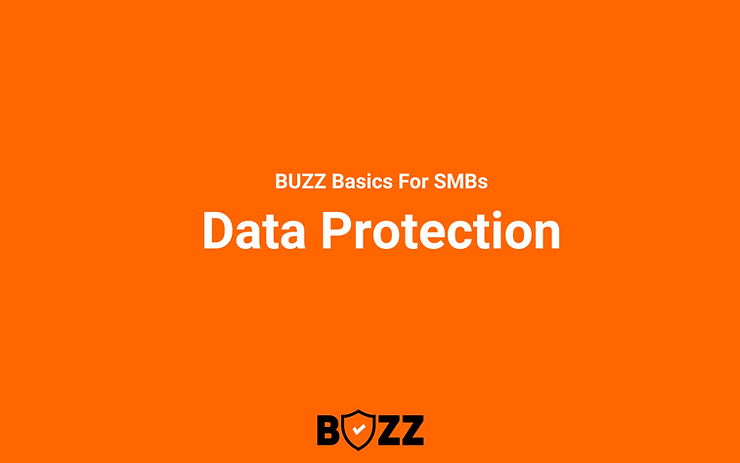For many Small and Medium Business (SMB) leaders, the term “secure architecture principles” might seem like a high-tech jargon, perhaps a domain exclusive to the largest corporations. Yet, in our digital-first era, where software intricacies weave the fabric of most businesses, understanding these principles is no longer a luxury—it’s a necessity. Every day, new vulnerabilities emerge, putting businesses of all sizes in the sights of cyber adversaries.
This guide tries to simplify secure design for small and medium-sized businesses (SMBs), pointing out how important it is for both protecting against today’s cyber threats and building a strong base for the future. Through this guide, we will equip you with the knowledge and skills to build a secure foundational architecture so you can protect and secure your business against ever-evolving cyber threats.
Secure Architecture for SMBs – What can you expect
Review Of Recent Cyber Incidents
Building Blocks Of A Secure Architecture
A Deep Dive Into Secure Architecture and Its Relevance to SMBs
Review Of Recent Cyber Incidents
Incident 1: Open S3 Bucket Fiasco
Amazon S3, a widely used cloud storage service, has been the epicenter of multiple security breaches, primarily due to misconfigured buckets. In multiple incidents, a vast amount of sensitive data, including personal information and confidential business documents, was inadvertently exposed to the public. These were a direct result of an S3 bucket that wasn’t securely configured. The aftermath saw significant financial losses, reputational damage, and potential legal ramifications for the involved entities. Such an oversight highlights the critical need for thorough security reviews and the implementation of secure architecture practices.
Incident 2: The Log4j Vulnerability
Another incident that shook the tech world was the Log4j vulnerability. Log4j, a popular Java logging library, had a critical flaw that allowed attackers to execute arbitrary code remotely. Given its widespread use across numerous applications and services, this vulnerability had a far-reaching impact. Many businesses were left scrambling to patch their systems and mitigate potential threats. This incident underscored the importance of secure coding practices and the need for regular dependency checks and updates in the software development lifecycle.
be proactive, know your weak spots, and focus on a secure foundation!
These incidents serve as a stark reminder of the challenges we face in today’s digital world. It’s not enough to just react to threats; we need to be ahead of the game. Regularly reviewing our tech setup and making sure we’re building things securely from the get-go is essential.
Building Blocks Of A Secure Architecture
Secure Architecture is the foundational framework for designing and implementing digital systems that prioritize the protection of data, assets, and operations. It ensures that every aspect of an organization’s digital business is protected against potential threats.
The core components include:
Secure Coding
Writing software that’s both efficient and free from vulnerabilities.
Architecture Review
Evaluating the digital infrastructure to ensure secure integration of all components.
Supply Chain Reviews
Examining third-party components for potential security risks.
Threat Modeling
Proactively understanding and anticipating potential cyber threats.
Deployment Review
Ensuring software deployments are optimized for security.
A Deep Dive Into Secure Architecture and Its Relevance to SMBs
Now that the basics are clear, let’s get into the specifics –
Secure Coding
Secure Coding is the practice of writing computer programs in a way that protects them against malicious attacks and vulnerabilities. This involves adhering to coding standards, avoiding known pitfalls in programming languages, and regularly testing code for vulnerabilities.
Technical Insight: Tools like SonarQube or Checkmarx scan the codebase for patterns that are known to be problematic, flagging potential issues like buffer overflows or race conditions or security misconfigurations.
Relevance for SMBs – When customizing platforms, it’s easy to introduce vulnerabilities. Automated scanners can identify issues in the code that might be exploited, ensuring robust security.
Architecture Review
An Architecture Review assesses the overall structure of a system, ensuring that all components, from databases to user interfaces, are designed and integrated with security in mind.
Technical Insight: This might involve ensuring that databases are not directly exposed to the internet, using Virtual Private Clouds (VPC) in cloud environments like AWS, or ensuring proper encryption is in place for data at rest and in transit using protocols like TLS.
Relevance for SMBs: With services like AWS or Azure, SMBs can inadvertently misconfigure settings. Tools like AWS Inspector can highlight insecure configurations, ensuring data remains protected.
Supply Chain Reviews
Every external component, library, or service that an organization integrates into its digital operations can introduce vulnerabilities.
Technical Insight: For example, using an outdated third-party library with known vulnerabilities can expose the system to attacks. Regularly updating these libraries and using tools like Dependabot can help in identifying and updating vulnerable dependencies.
Relevance for SMBs: SMBs often integrate multiple third-party tools. Regular scans with tools like Snyk ensure that these integrations don’t introduce vulnerabilities.
Threat Modeling
Threat Modeling is a systematic approach to identify and prioritize potential threats in a system. By understanding the system’s architecture and data flow, possible vulnerabilities are pinpointed.
Technical Insight: Using tools like Microsoft’s Threat Modeling Tool, teams can create data flow diagrams, highlighting potential attack vectors, such as unauthorized data access or system breaches.
Relevance for SMBs: SMBs can focus on significant threats to their operations, like customer data breaches, ensuring effective resource allocation and robust protection.
Deployment Review
Before any software or update is deployed, it undergoes a thorough review to ensure that it doesn’t introduce new vulnerabilities and is optimized for performance.
Technical Insight: This involves checking for insecure configurations, ensuring proper access controls, and validating that the software behaves as expected in a production-like environment. Automated CI/CD pipelines using tools like Jenkins or GitLab CI can run a series of tests and scans before any deployment.
Relevance for SMBs: When rolling out updates or new tools, automated deployment pipelines can ensure that security checks are consistently applied, reducing the risk of deploying vulnerable software.
For SMBs, navigating the different aspects of Secure Architecture might seem daunting, but with the right knowledge and tools, it becomes a manageable and integral part of business operations. By focusing on these core components and tailoring strategies to their unique needs, SMBs can secure their applications, ensuring not only the safety of their assets but also the trust of their clientele.
How To Prioritize Effectively With Limited Resources?
Setting the right priorities ensures that you’re not just ticking boxes but genuinely enhancing your security posture while using your resources effectively. Here’s a step-by-step approach to help SMB owners prioritize and implement secure architecture.
Identify Critical Assets
Before you can protect your assets, you need to know what they are. For SMBs, certain data or systems will be more critical than others.
Guidance: List down all digital assets, from customer databases to internal communication tools. Rank them based on their importance to business operations and the potential impact if compromised.
Secure Coding and Regular Updates
Many vulnerabilities arise from outdated software or poor coding practices.
Guidance: Ensure that any custom software follows secure coding practices. Regularly update all software, applications, and platforms to protect against known vulnerabilities. Use CI/CD pipelines and regular assessments to be on top of it.
Conduct an Architecture Review
Understanding how your digital components interact can highlight potential vulnerabilities.
Guidance: Periodically review your digital infrastructure. Focus on data flow, access points, and potential weak spots. Consider seeking external expertise for an unbiased view.
Review Third-party Tools and Services
SMBs often rely on external tools and services, which can introduce vulnerabilities if not properly vetted.
Guidance: Maintain an updated list of all third-party tools and services. Regularly review their security practices and ensure you’re using the latest, most secure versions.
Engage in Threat Modeling
By understanding potential threats, you can better prepare and defend against them.
Guidance: Identify potential threats specific to your industry and operations. Prioritize them based on potential impact and likelihood.
Deployment Reviews Before Rollouts
New tools or updates can introduce vulnerabilities if not properly vetted.
Guidance: Before deploying any new tool or software update, conduct a security review. Ensure configurations are secure and access is appropriately restricted.
Continuous Education and Training
Human error is a significant source of vulnerabilities. Keeping your team informed and educated reduces risks.
Guidance: Regularly conduct cybersecurity training sessions for your team. Ensure they’re aware of the latest threats and best practices.
With the right priorities and a consistent schedule, you can ensure that your defenses remain robust, no matter how the digital threats evolve.
Conclusion
For Small and Medium Businesses (SMBs), the challenges to comprehensive secure architecture can often seem daunting. However, a planned and prioritized view will help build a robust security posture offering competitive advantages, instilling trust in customers, and ensuring business continuity.
Ready to take the next step towards a secure digital future?Talk to us at BUZZ for personalized guidance and support.
Our team of experts is here to assist you, ensuring that your business remains resilient in the face of evolving cyber threats.
Contact BUZZ: [email protected] | LinkedIn




